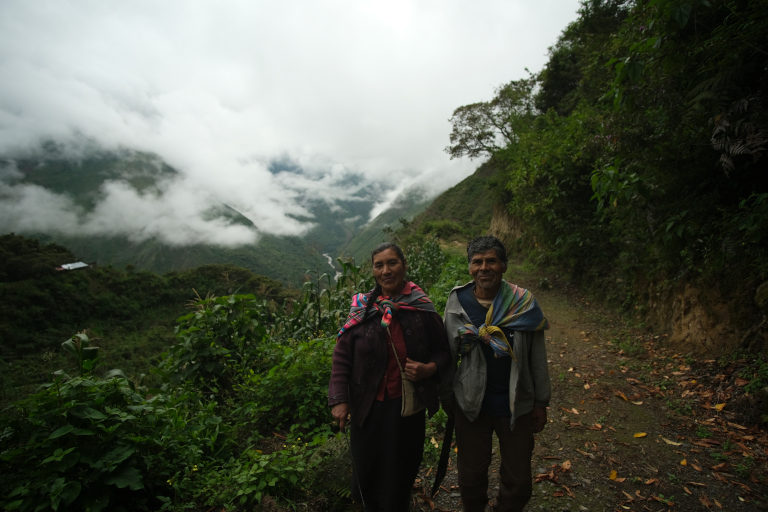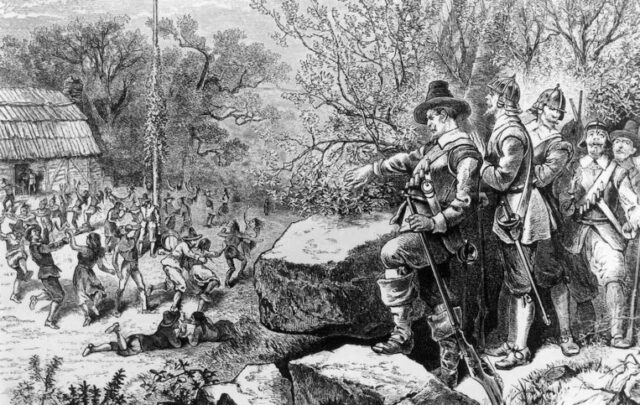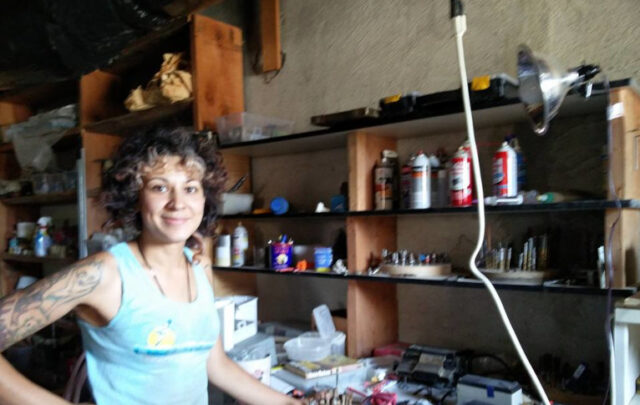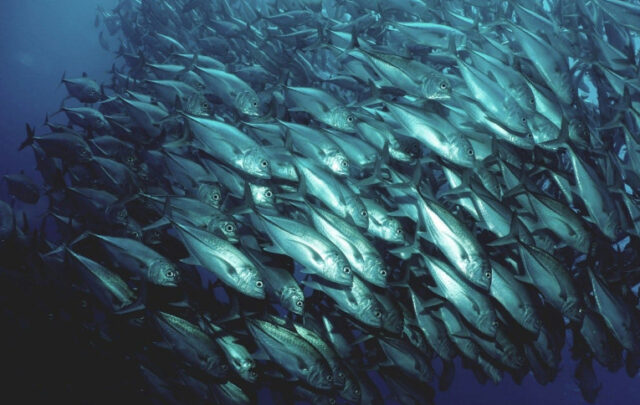Ed. note: This story originally appeared in Spanish in La Mula.
Beyond the Daily Grind: How a Few Peruvian Coffee Revolutionaries Are Conserving Nature While Growing World-Class Beans. This is a story about a radical idea to improve farmer livelihoods and conservation in one of Peru’s and the entire Amazon’s most biodiverse regions via the humble coffee bean.
In 2014, I spent 10 days hiking through the Mapacho River Basin, one of the most biodiverse places on Earth in Peru’s western Amazon region. I walked along trails shaded by a dense canopy, waded through rivers and slept in shelters designed to dry coca leaves. I was there leading a research team collecting data on the livelihoods of Indigenous farmers. Shortly after I left, though, something arrived that would devastate the communities. I returned in 2020 to deserted homes, increased poverty and stories of a disease that caused it all.
“Before the disease we would harvest 80 sacks of coffee, now we harvest 10 maybe 12 sacks each year. It doesn’t cover the costs of production. We can’t pay to send our children to school and they are left uneducated. We have lost so much to this disease.”
These were the words uttered by Alejandra Mamani,of the Yuncarunas Indigenous people of the area, in 2020. She described the plight of Mapacho. A disease ravaging one of the world’s most important crops, coffee leaf rust, had found its way into this remote corner of the world and was wreaking havoc.
The situation was so serious, some experts made the plight of coffee farmers and their crop their new cause. Julio Nina is an agronomist and expert in plant disease management and one such individual. In 2020 he decided that working in Mapacho was the most valuable use of his time.
“Managing leaf rust in such a remote area is difficult, you can’t bring in outside inputs,” he points out, referring to fertilizers,herbicides and the like. “We had to use local resources and harness the ecosystem to be successful.”
Julio and the cooperative of farmers have been effectively managing the disease and doubling farmer’s production in a matter of 3 years. The high level of biodiversity and the health of the ecosystem have been critical to their success. It also provided something unexpected: an incredible-tasting cup of coffee.
Julio and the farmers’ co-op, Cooperativa Agraria Orígenes del Valle de Lacco (CAOVL)\, believe that this coffee is in high demand because it comes from a healthy rainforest where the soil teems with life and the canopy hums with the sound of birds, insects and monkeys. If they can prove that the best coffee comes from the healthiest, most biodiverse ecosystems, it could disrupt the specialty coffee sector. Buyers, roasters and producers would be forced to prioritize biodiversity conservation, even if inadvertently. Many experts claim this strategy has its limitations, but, everyone agrees that the coffee coming out of Mapacho is, well, special.
As coffee becomes more profitable in Mapacho, it must also contend with the reality that increased crop production could threaten the region’s vast array of wildlife and plants.
“One of our main goals is to make sure farmers can earn enough income so that they can stay on their land and continue living within the ecosystem,” says Julio. “We have done that. Now, we need to make sure the ecosystem stays intact.”
Most scientists agree that the key to conserving critical ecosystems is ensuring that indigenous populations stay on their land. Globally, Indigenous people’s territory contains 80% of the world’s terrestrial biodiversity. protecting it from extractive industries like logging and mining. Hauke Hoops, a researcher with the conservation-focused Frankfurt Zoological Society notes, “Indigenous farmers are the principal actors in conservation of this biosphere, they are part of the ecosystem.” The communities of the Mapacho basin have seen a significant decrease in population. According to census data the population in rural areas decreased by 29% while the urban population increased by 73%. Ensuring that farmers have the opportunities to earn a living from their land and continue to protect biodiversity is a priority for CAOVL, however, this strategy is not without risks.
The threat could arise that Indigenous farmers like Alejandra Mamani earn more money and then decide to intensify their production which could jeopardize biodiversity in the area. The CAOVL is committed to conserving their ecosystem, and they believe that the unique characteristics of their coffee will provide not only an economic benefit from the communities but will also be the catalyst for implementing and maintaining conservation practices.
Revealing a hidden gem
For generations coffee production in Mapacho was barely profitable enough to keep farmers on their land, and the indigenous Yuncarunas people like Geronima Olave were suffering injustices due isolation from the outside world.
“We would take our coffee on the backs of mules to the road where a coffee buyer would be waiting for us,” she recounts. “The buyer would inspect our coffee and tell us it was very low quality and he would only pay a fraction of the price. We had no choice, we had to sell.”
Geronima and her sister Geralda had no idea about the quality of their coffee; it had never been tested.

Geralda and her sister, Geronima, stand under the canopy of their coffee farm. For decades they have been taken advantage of by coffee buyers who paid them minimal prices for coffee they claimed was low quality.
But in 2021, Julio and his team sent coffee samples to be scored by certified coffee quality graders called Q graders based on a wild hunch that there was something special about Mapacho’s beans. Q graders grade coffee on two dimensions: physical characteristics are evaluated and then the coffee is tasted to establish its sensorial or taste characteristics. The two dimensions are used to give the coffee a score. Anything over 80 is considered specialty coffee and anything close to 90 would be considered some of the best coffee in the world. Defying the belief of many farmers, CAOVL’s coffee turned out scores in the low to mid 80s. An incredible feat for farmers who never even realized their coffee was specialty grade.
A unique rainforest ecosystem
Mapacho lies in the buffer zone of Manu National Park, home to more reptile and amphibian species than anywhere else in the world. A thousand bird species live in the park and the rare giant river otter. The National Geographic society has identified the eastern slope of the Peruvian Andes as the most biodiverse region on earth. The high level of plant and wildlife diversity is due to the tropical mountainous landscape. The elevation ranges from 650 to 14,000 feet, and this variation lends itself to several different microclimates and niche ecosystems where unique species thrive. To Hauke and other conservationists,; the protection of this unique region is paramount.
For generations, though, indigenous Mapacho farmers lived in isolation from the outside world and largely in harmony with the forest, unaware that the coffee they were growing had potential to be some of the best in the country.
“We did not have the knowledge or the resources that farmers in Colombia or Costa Rica have,” Leonardo Marchaca, president of the Cooperative attests. “It was unusual that our coffee scored so high,” he adds.
As the co-op focused on improving their farming practices, the average scores have gone up 1.5 points in the last two years–an impressive feat, according to Q graders. What really stood out for Q graders was the sensorial characteristics.
“Experts love the flavor and the notes of the coffee,” says Julio. “I’m no expert but we just kept getting very positive feedback.”
In the first year of CAOVL putting their coffee on the market, one of North America’s largest specialty coffee importers, Royal Coffee, purchased most of the farmers’ crop and labeled it a “Crown Jewel,” their most premium line of beans.
”The health of our rainforest and the biodiversity are why our coffee is so good,” says Eloy Wilca, one of CAOVL’s most active farmers. “ “We think we can win the taza de oro, or the best coffee in Peru prize,” he affirms.
It is ironic that the isolation that allowed intermediaries to exploit Geralda and her neighboring farmers also created conditions for such an amazing cup of coffee. Research from the World Wildlife Fund points out that the high level of biodiversity is partly due to the Mapacho region’s isolation and inaccessibility.

Two farmers of the CAOCL stand on a path to their farms. The montane rainforest provides habitats for some of the richest terrestrial biodiversity in the world.
“We have no access to a road. Only the most necessary items like sugar, salt and rice are brought to our community, everything else we need to produce ourselves,” one of CAOVL’s active members Francisca Puma points out.
As a result, communities in Mapacho had to work with the rainforest, not against it. Several different types of fruits, vegetables, and tubers are planted in a natural agroforestry method that benefits from the cycles of the environment. Any Western monoculture farming would quickly deplete soil fertility. Eloy Huillca is a young farmer and one of the founding members of the cooperative. He states,
“Things are different here, we don’t slash and burn the jungle to grow coffee, when you burn, you will see thousands of dead centipedes on the ground. We can’t afford to lose these centipedes because they break down dense wood and foliage, greatly improving soil fertility. The soil is our most important asset.”
Eloy is convinced his people’s coffee is of such a high caliber because of these practices:
”Biodiversity is key to our coffee, we have a diversity of pollinators and plants. Different pollinators visit different plants and all the flavors of the jungle give our coffee characteristics and complexity that you can only find in high biodiversity areas.”

Clara and Eloy Wilca inspect their coffee crop. Eloy claims that their coffee is of such high quality because of the rich biodiversity of the area.
Some experts in the specialty coffee business, though, argue that the link between biodiversity and specialty coffee quality may have its limitations.
Suarin Nanavati has been working throughout the sector since 2009 and founded Ethos Agriculture, an institution that designs sustainability programs for the coffee industry, communities, co-ops, donors, and buyers. He agrees that an ecosystem’s health has a direct impact on the quality of coffee and supports the mission of the coffee cooperative in Mapacho, but he also acknowledges the challenge of basing everything off of a Q score. Coffee scores and the people who score them are fickle, and that the characteristics of flavor that score highly fluctuate and might not reflect high biodiversity, pollinators or wood eating centipedes.
Saurin also mentions that scores have a lot to do with factors, too:
“Coffee scores are dominated by farmers who are big, have resources, high levels of education and who use modern and consistent post harvest practices.”
He’s not sure if Julio and the co-op can prove that the best coffee in the world comes from the healthiest ecosystems. What he argues is that the coffee coming out of Mapacho should be considered the best in the world for other reasons.
“The good thing about specialty coffee by some of its principles is that ecological sustainability is implied. Specialty coffee is actually sustainable coffee and it should be seen as such,” says Saurin. “We should use specialty coffee to educate consumers and buyers on the importance of being more environmentally and socially responsible. Mapacho consists of small scale indigenous farmers whose identity is directly connected to their land. They live off the land and support the ecosystem and the biodiversity. This identity and culture promote high levels of community sustainability. When you drink their coffee you are supporting the identity and livelihoods of these farmers and helping them protect this incredibly biodiverse ecosystem.
“That should taste like the best coffee in the world,” he adds.
Small scale farmers working in harmony with the rainforest
Small scale farmers like those found in Mapacho are often the most sustainable farmers, maintain the most biodiversity and generally produce the best coffee because industrial agriculture inputs are not accessible and farmers are encouraged to grow in harmony with the rainforest. Pablo Siles argues in his research that smallholder coffee farmers use ecological agroforestry practices to grow coffee. These farmers are producing in harmony with the rainforest, sequestering carbon, carrying on thousands of years of sustainable living methods and generating new knowledge while protecting biodiversity and healthy ecosystems. They are not just farmers, they are guardians of the rainforest.
Clara Cespedes is a mother, farmer and member of the Yuncarunas people and CAOVL. I chat with her as we sit on the soft dark soil of her coffee farm. I’m reminded of the fact that the highest quality, nutrient-dense food comes from healthy organic soils. An apple grown in a monoculture with chemical fertilizers and pesticides has a fraction of the vitamins and nutrients of an organic apple grown on a biodiverse farm. CAOVL, of which Clara is part, is taking that idea to the extreme. Its members live in one of the most biodiverse places in the world and they are saying “the best coffee in the world will come from here.” It’s about more than just beans, it’s about recognizing that the places that provide habitats for an incredible abundance of life will also provide products of superior quality. They may be just scratching the surface of this linkage, but the coffee farmers in Mapacho are taking the lead in redefining the value of the rainforest, of so-called ecosystem services.
Clara believes in her co-op, noting,
“We want the coop to continue to grow and to continue to offer us opportunities to learn and improve our coffee. Most importantly we believe our kids can have a better future due to coffee. I want them to care for the environment.”
The role of a campesino is to care for the rainforest,” she says.
This story was produced with support from the Earth Jounalism Network. Edited by Sam Shramski.




